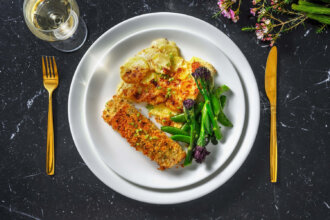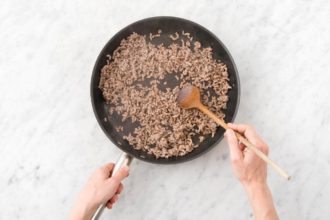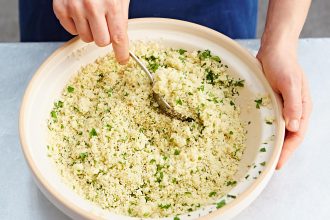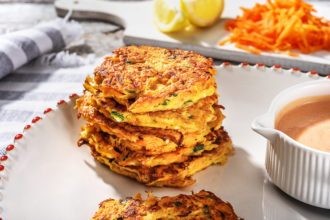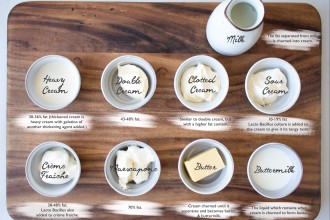How to Make Curry Less Spicy
June 20, 2023Imagine spending time and effort making an incredible curry from your Indian recipe, but after a quick taste to check the seasoning, there’s a problem. The simmering spices may intensify more than expected, resulting in an overly spicy curry. If you’re unsure how to reduce spiciness when preparing a chicken korma recipe or how to cool down a Thai red curry recipe, read on for some tips.
What makes curry spicy?
The heat in a curry comes from the chilli you use, whether it’s fresh chillies, flakes or powder. All chillies contain a compound called capsaicin – and the amount they contain depends on how hot that chilli is on the Scoville scale.
Some people have more of a tolerance for capsaicin than others. What’s mild to some may be spicy to others – “mild” is subjective, and that’s the reason why cooling down a curry might be necessary.

What are the hottest curries?
Some of the spiciest curries available include jalfrezi and vindaloo, which are classic dishes renowned for their spicy sauces. Most of the hottest curry dishes include a spicy ingredient called bhut jolokia, which is officially the spiciest chilli in the world and originates from Nagaland. However, if you’re not in the market for a hot curry that will make your taste buds tingle, you can make your curry less spicy by following the instructions in this guide.
How to make curry less spicy
It might be that you’ve made a recipe before, and the heat levels were too high. There are two main ways to make a hot curry milder. The first is simply to reduce the amount of chilli you add. You’ll still get the same great flavours, just with a milder chilli kick. Hannah Gilbert, Head of Culinary Development at HelloFresh Australia & New Zealand, also suggests keeping the quantities of all spices the same but adding more of the other ingredients. Even making double the quantity of curry, with the regular amount of spices, is a great way to reduce the heat without compromising on flavour.
How to reduce heat in curry
There are various ways to make a curry less spicy. The method you choose depends on the type of curry you’ve made, the ingredients and flavours it contains and, of course, what you’ve got available in your kitchen.
Coconut milk, which is used in this Indian beef curry recipe, can cool down a spicy curry, but only if the flavours complement the dish; for example, coconut milk works well in this Thai curry recipe and similar coconut-based curries. Alternatively, a dash of milk can also work well, but make sure it doesn’t split when cooking.
A dollop of sour cream or yoghurt on top is also a good way to cool a curry down. It’s also worth learning how to cool down a hot curry by using sugar. Adding a pinch of sugar can reduce heat levels – just be sure to taste each time before adding too much.
If your curry has a tomato base, adding extra tomatoes is a great way of cooling down a hot curry. The choice of using tinned tomatoes, passata, fresh tomatoes or even ketchup is up to you.
Another way to reduce heat in curry is by using starch. Adding potatoes or sweet potatoes to a curry recipe will absorb some of the heat. Serving your curry with a side such as potatoes or rice gives you bland flavours to counteract the bold spices.
A final tip is to use acidic flavours. Lemon juice, lime juice or vinegar can take away some of the intensity of chilli heat. Hannah Gilbert recommends tasting your curry sauce just before you serve, as you may want to add a pinch of sugar afterwards to balance out the tartness.

For those seeking to learn how to cool down a spicy curry, a final tip is to use acidic flavours. Lemon juice, lime juice or vinegar can take away some of the intensity of chilli heat. HelloFresh’s Recipe Development Manager, Mimi Morley, recommends tasting your curry sauce after you’ve made it, but before you serve, as you may want to add a pinch of sugar afterwards to balance out the tartness.
How to make a chilli con carne less spicy
Similar rules apply to chilli con carne. If you want to make it less spicy, simply add less chilli while you’re cooking. But if you want to cool it down after you’ve already made it, try adding a pinch of sugar or more ripe tomatoes, or serve it with sour cream to counteract some of the heat.
Mild spicy curry recipes
There’s no need to cool down this lamb shoulder korma curry recipe because it’s already mild. It’s easy to customise, too: Hannah Gilbert suggests sprinkling a mix of red chilli, toasted coconut and fresh coriander over the top for those who like their korma a little spicier.
- To serve two people, add 300 ml water to a saucepan and bring to a boil.
- Once boiling, add 150g of basmati rice, stir, cover the pan and reduce the heat to medium. Cook for 10 minutes, remove from the heat and put to one side (still covered) for another 10 minutes or so.
- Place a large frying pan over high heat and add a drizzle of oil. Once hot, add 280g of diced chicken, reduce the heat slightly and fry for 4-5 minutes until golden brown. If the core temperature (where the chicken is thickest) is 60°C for 45 minutes, 65°C for 10 minutes, 70°C for two minutes, 75°C for 30 seconds and 80°C for six seconds, then it has reached its perfect temperature. You could use tofu to prepare this veggie/vegan korma recipe instead.
- Drizzle over half a sachet of honey and stir to coat.
- Add a pack of mangetout and a pot of our Korma spice mix and cook while stirring for 1 minute.
- Add 100 ml of water and chicken stock powder and simmer for 3-4 minutes.
- Stir through creme fraiche, bring to a boil, and then reduce the heat to low.
- Add ground almonds and simmer until the sauce is creamy. Season with salt and pepper if needed, fluff up the rice, and serve it. Top it with the chilli mixture if you wish.
Recipes for cooler curries
There are many HelloFresh recipes for milder curries. Rather than cooling down a spicy curry, try making a less spicy curry – like one of these:
- Mild Thai Red Coconut Chicken Recipe
- Thai Yellow Fish Curry Recipe
- Creamy Prawn Curry & Rice Recipe
- One-Pot Indian Haloumi & Veggie Curry Recipe
Expand your repertoire of milder curries by searching the HelloFresh recipe hub for more ideas, from mild curries to spicier options, with heat that can be easily adjusted to your liking.



